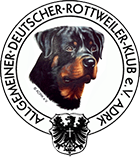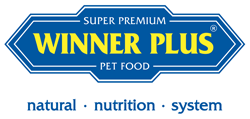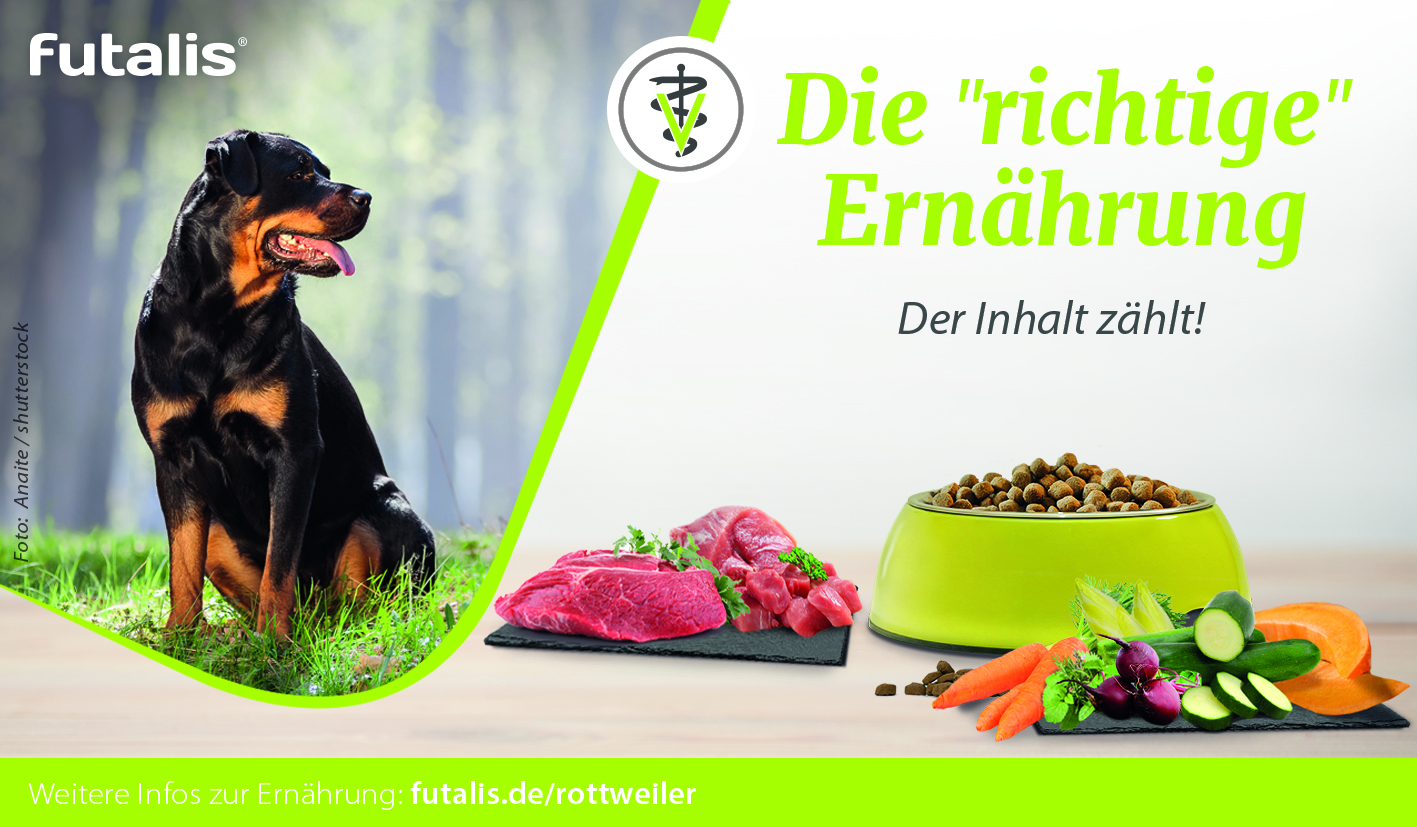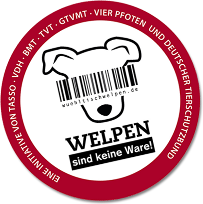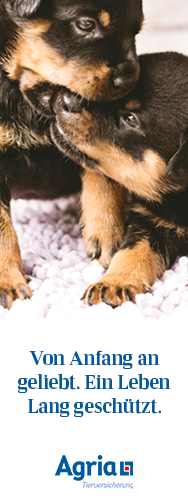| ADRK |
| Allgemeiner Deutscher Rottweiler-Klub e.V. |
The "right nutrition" of a Rottweiler - child's play or science in itself?
At first glance, most Rottweilers often seem to have the same demands on their food. Incorrect feeding often only shows its full extent in later years. For this reason, the nutrition of this breed, no matter whether dry food, wet food, barf or raw feed, has to pay particular attention to one thing: a nutritional composition tailored to the needs.
Not all dogs are the same
In no other mammal species are there such great variations between individuals as in dogs. Here the spectrum ranges from 1 kg Chihuahua to the Mastiff with 90 kg and more. But our dogs do not only differ in their appearance and character.
Every single dog has very different demands on his food and the nutrients it contains. The main determinants of a dog's nutritional needs are: Breed, age, activity (incl. breeding use), weight, nutritional status, intolerances, diseases and possibly health predispositions, which usually depend on the breed and size of the dog.
No Rottweiler has the same nutritional needs as any other
Even if one looks around within a breed, as for example within the Rottweiler, the individual dogs differ considerably in what they need daily. Here are a few selected examples of what makes a Rottweiler nutritional:
Breed
A dog's energy and nutrient requirements are not proportional to its body weight. The figure below shows that a small dog needs a completely different ratio of nutrients to each other than a larger breed, based on the example of the energy requirement and the required calcium content. The larger and heavier the breed, the greater the difference. Heavy dogs such as the Rottweiler therefore require a completely different diet than smaller breeds.
Here it must be pointed out again expressly: If one uses the same standard food for different breeds and regulates the "demand" practically only by the quantity, then one can (perhaps) meet the required energy content of the Rottweiler, but experience shows that there is a considerable over- and undersupply with other nutrients.
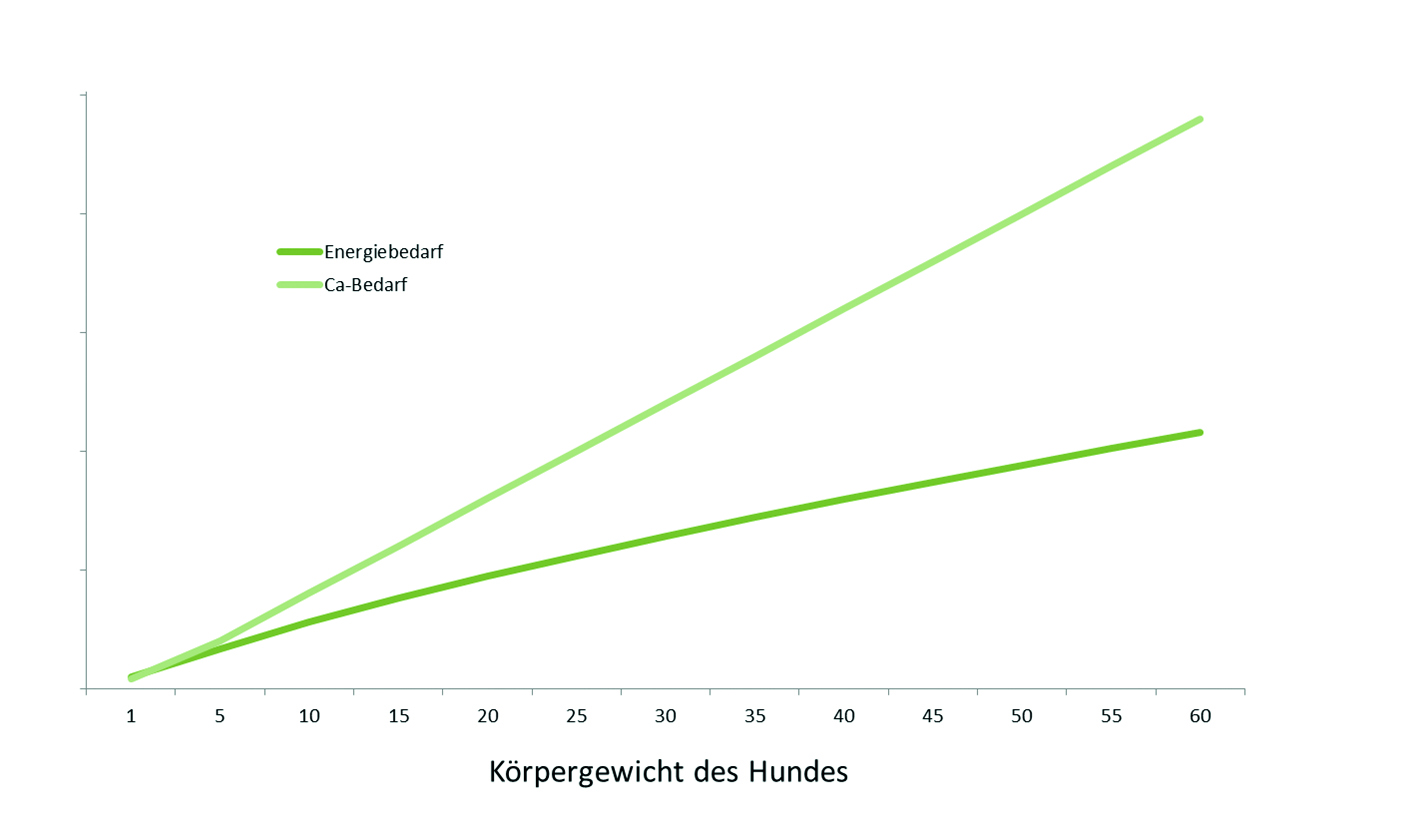 Figure 1: Nutrient requirement by body weight of the dog using the example of Energy and Calcium
Figure 1: Nutrient requirement by body weight of the dog using the example of Energy and Calcium
Age
Especially also with young dogs the race affiliation plays a big role for the nutrient supply. Bigger dogs need a longer time until they reach their final weight. They should show as moderate a growth rate as possible in order to avoid developmental disorders. An oversupply of energy or calcium can cause permanent damage. So it turns out that a food can not cover the needs of all dogs equally, but should be responsive to size, breed and age of the dog.
Activity
Rottweilers are very versatile and can therefore be found in many different areas. The spectrum ranges from family dogs to versatile applications as working dogs. Since the degree of activity and utilization is another factor that strongly influences the nutrient requirement, this must also be taken into account when selecting food. It is obvious that active dogs need more energy. However, regulation by the amount of food is not recommended. The energy concentration in the food should be increased, because otherwise it would come to an oversupply with protein or other nutrients, which can even affect performance.
Health
Also possible illnesses of the dog influence the food composition. In particular, overweight or urinary stones are feed-related problems and can be remedied by changing the diet. Other illnesses are treated with medication, but additionally require adapted feeding for successful healing. Depending on the affected organ system, various ingredients can have a supporting effect or the reduced supply of individual nutrients can relieve the organ and the metabolism. Here, the existing problem must be addressed individually. Genetically conditioned susceptibilities can also be effectively countered in advance.
For the "right" nutrition you have to know what to pay attention to
Science has made considerable progress in recent decades. As in human medicine, veterinary medicine and especially dietetics (i.e. the science of nutrition) have also made a great leap forward. Today we know exactly, what constitutes the nutrient need of a dog and how we can deal with it. In the nutrition consultation this is usually converted by a ration calculation. The result of this calculation is an exact list of the requirement as well as a nutritional estimate.
Conclusion: The shape doesn't matter. Only the content counts
If you observe these rules when choosing the right food, then from a medical point of view it does not matter whether your dog is fed dry food, wet food, barf or fresh food. These feeding forms only form the shell for what should be contained in the food of your Rottweiler.
As long as your dog accepts and tolerates the food well, you are very free in your decision. However, you must make sure that the composition of the food exactly meets your dog's nutritional requirements. For this reason, it is advisable to calculate the ration for each of these feeding forms in advance, which is offered by many veterinarians.
